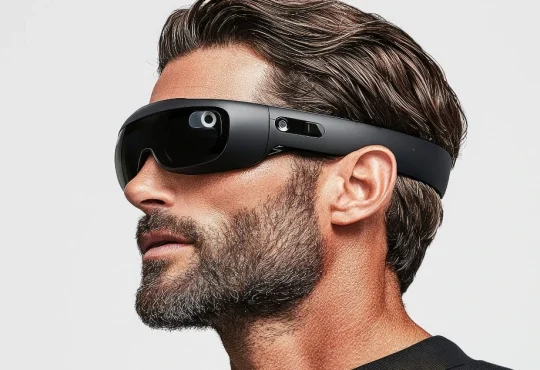Wearable health trackers are popular among fitness buffs and health-conscious individuals for their ability to monitor various health metrics like steps, heart rate, and sleep quality. However, their accuracy is a subject of debate. As we explore the truth behind these devices, it’s crucial to question the reliability of their sensors and metrics. Can we truly trust the data our favorite fitness trackers and smartwatches provide?
Health Trackers Guide: Examining the Valuable Precision!
Factors Influencing the Accuracy of Wearable Tracking:
When contemplating the purchase of a fitness tracker, it’s important to consider both the advantages and disadvantages. Among these considerations, one crucial factor is the device’s ability to fulfill its advertised functions accurately.
Algorithms and Proprietary Tracking Methods
Algorithms and proprietary tracking methods are pivotal components influencing health trackers’ accuracy. Each brand, whether it’s the holistic wellness focus of Apple, Samsung’s integration of the BioActive sensor, or Fitbit’s diverse range of models, employs unique algorithms to process raw sensor data and provide users with comprehensive health metrics. These algorithms, often developed through extensive research and testing, are meticulously crafted to interpret data points such as heart rate, activity levels, and sleep patterns, translating them into actionable insights for users to optimize their health and fitness routines. However, the intricacies of these algorithms are typically shrouded in secrecy, making it challenging for consumers to ascertain their accuracy and compare them across different brands.
The proprietary nature of these algorithms presents a hurdle for consumers seeking transparency and assurance regarding the accuracy of their health-tracking devices. Due to restricted access to the internal mechanisms of these algorithms, users are left to rely solely on the brand’s reputation and marketing claims when evaluating the reliability of their chosen tracker. As a result, while users may benefit from these devices’ advanced features and functionalities, they are also subject to uncertainties regarding the accuracy and consistency of the health metrics provided, highlighting the need for greater transparency and standardization within the wearable tech industry.
Differences in Individual Physiology
Differences in individual physiology present another crucial consideration when assessing the accuracy of wearable health trackers. Users’ varying body types, fitness levels, and health conditions can significantly affect how their bodies respond to exercise and other activities. However, since most wearables are developed using data from the general population, they may only sometimes adequately accommodate these individual variations, potentially resulting in discrepancies in health metrics.
This lack of personalized calibration in wearables can pose challenges, particularly for individuals whose physiological characteristics deviate from the “average” range. As a result, users with unique physiological profiles may find that their wearable devices provide less accurate or relevant health data, underscoring the importance of considering individual differences when evaluating the effectiveness of these technologies.
Positioning and Wear of your Smartwatch
The positioning and wear of your smartwatch play significant roles in determining its tracking accuracy. Typically, manufacturers advise wearing the device snugly on your wrist, just above the wrist bone. However, factors such as wrist size, shape, and arm movement can all influence the accuracy of measurements. If the smartwatch is too loose, it may not maintain consistent contact with your skin, potentially leading to inaccurate heart rate readings. For example, individuals who wear their smartwatches upside-down for comfort during activities like mountain biking may compromise the device’s ability to capture precise heart rate metrics despite still navigating effectively.
These considerations highlight the importance of ensuring proper positioning and fit when wearing a smartwatch to maximize tracking accuracy. Users should follow manufacturer recommendations for placement on the wrist and strive to maintain a snug fit to optimize the device’s performance. By following these guidelines, individuals can improve the reliability of health and fitness data collected by their smartwatches, enabling more informed decision-making and better insights into their overall well-being.
Limitations in sensor technology play a crucial role in determining tracking accuracy in wearable devices. Despite notable advancements, inherent shortcomings persist, impacting the precision of health monitoring. While some devices incorporate advanced sensors like the BioActive Sensor in Samsung Galaxy Watches, capable of measuring body compositions such as muscle, fat, and water, others rely on less sophisticated technology. For instance, budget-friendly fitness trackers like the $50 Amazfit may employ simpler sensor technology, potentially compromising the accuracy of health metrics recorded by the device.
Limitations in Sensor Technology
Limitations in sensor technology significantly impact the accuracy of tracking in wearable devices. Despite advancements, inherent constraints persist, potentially compromising the precision of health monitoring. While some devices feature advanced sensors like the BioActive Sensor in Samsung Galaxy Watches, capable of measuring body compositions such as muscle, fat, and water, others may rely on simpler technology. For instance, budget-friendly fitness trackers like the $50 Amazfit may opt for less sophisticated sensors, potentially compromising the accuracy of health metrics captured.
These limitations underscore the ongoing need for innovation within the wearable tech industry. As consumers increasingly seek precise health monitoring features, manufacturers face pressure to enhance sensor capabilities to meet these demands. Continued investment in research and development aimed at refining sensor technology can revolutionize wearable devices’ capabilities, enabling users to make better-informed decisions regarding their. The type and quality of sensors utilized can significantly influence the accuracy of collected data.
Examining the Precision of Popular Smartwatches
Each fitness tracker brand boasts its own distinct capabilities, but the ultimate question lies in its tracking accuracy. To better understand the performance of these smartwatches, we can assess them against gold-standard measurement tools such as pedometers for step counting, chest strap heart rate monitors, lab-based metabolic testing for estimating calorie burn and equipment for tracking sleep patterns. Through such comparisons, we can gain valuable insights into the reliability and precision of these devices.
Pedometers’ Accuracy
Regarding step counting, pedometers represent the traditional choice, operating through simple mechanical or electronic mechanisms that detect movement during walking or running. In contrast, smartwatches utilize more sophisticated algorithms, processing data from accelerometers and gyroscopes to track steps. While smartwatches generally offer reasonably accurate step counts, factors such as walking speed, arm movement, and other activities can influence readings, potentially resulting in false step counts.
A study in the Journal of the American Medical Association scrutinized the accuracy of pedometers integrated into wearable devices and smartphone applications. The findings revealed that these devices could be relied upon to accurately track the number of steps taken, shedding light on their effectiveness in monitoring physical activity.
Accuracy of heart rate monitoring
Regarding heart rate monitoring, chest strap heart rate monitors stand out for their accuracy, utilizing electrical signals from the heart to measure beats per minute. In contrast, smartwatches employ optical heart rate sensors that track changes in blood flow through the skin. While smartwatches typically offer reasonably accurate heart rate readings during steady-state exercises, they may encounter challenges in accuracy during high-intensity or irregular activities due to factors such as arm movement and sweat.
A published study examined the accuracy of wrist-worn devices, including those from Apple, Fitbit, and Samsung. The study concluded that most wrist-worn devices accurately measure heart rate during laboratory activities. Yet, the precision of these devices can fluctuate based on the activity being undertaken. For example, while walking, smartwatches and wrist-based devices often reported higher heart rates than actuals, whereas during typing, wearables tended to indicate lower heart rates. Conversely, research in the Journal of the American Medical Association Cardiology found that chest strap heart-rate monitors exhibited a 99 percent correlation with electrocardiographs, making them the preferred choice for precise heart rate monitoring.
Precise measurements of calories burned
Lab-based metabolic testing is considered the gold standard when estimating calorie burn, as it measures oxygen consumption and carbon dioxide production to compute the number of calories burned. On the other hand, smartwatches and fitness trackers like Fitbit utilize algorithms that factor in heart rate, age, weight, and activity level to estimate calorie expenditure. However, the accuracy of these estimations may vary depending on individual factors and the specific activity being performed, rendering them less precise than lab-based testing.
A European Journal of Sports Science study evaluated devices from three manufacturers, including Apple, Polar, and Fitbit, to assess their accuracy in measuring energy expenditure, or calories burned, during various activities. The research concluded that all three devices exhibited poor accuracy in estimating energy expenditure across all activities. While smartwatches hold the potential for accurately tracking this metric in the future, current technology needs to provide precise measurements of calories burned.
Sleep tracking accuracy
Regarding sleep tracking accuracy, clinical-grade equipment like polysomnography stands out for its comprehensive measurements of brain function, eye movements, muscle activity, and heart rate. However, access to this level of accuracy is limited to sleep clinics, necessitating overnight stays for detailed sleep assessments.
In contrast, wrist-based wearables have inherent limitations in capturing data from a single point on the body. As a result, they rely primarily on accelerometers and heart rate data to estimate sleep stages, which may result in less accurate measurements. According to Johns Hopkins Medicine, while wearables can offer insights into sleep habits and provide users with something to reflect on, none of the devices currently available on the market can directly measure sleep. For precise sleep measurements, clinical-grade equipment remains the gold standard.
Advantages of Accurate Fitness Trackers:
Smartwatches and fitness trackers have transformed the health and fitness monitoring landscape, providing users with invaluable insights into various facets of their well-being. Despite initial challenges with accuracy, these devices have made notable advancements in recent years. A meta-analysis published in 2022 confirmed the effectiveness of wearables in measuring steps and heart rate, particularly when utilizing a chest strap for heart rate monitoring. However, the study also highlighted limitations in accurately measuring calories burned and sleep tracking.
Recent research reviewed in The Lancet Digital Health underscores the overall benefits of using fitness trackers despite potential limitations in accuracy. These devices have demonstrated effectiveness in increasing physical activity levels among users, indicating their positive impact on promoting a healthier lifestyle. While challenges persist in certain metrics, like sleep tracking, the advantages of fitness trackers outweigh these drawbacks, making them valuable tools for enhancing health and fitness.
With each new version, fitness trackers are enhancing their accuracy. While early models may have been unreliable, modern devices are highly effective in encouraging activity, setting achievable goals, and monitoring progress over time. This makes them a worthwhile addition to your wellness routine, offering valuable support on your fitness journey.





